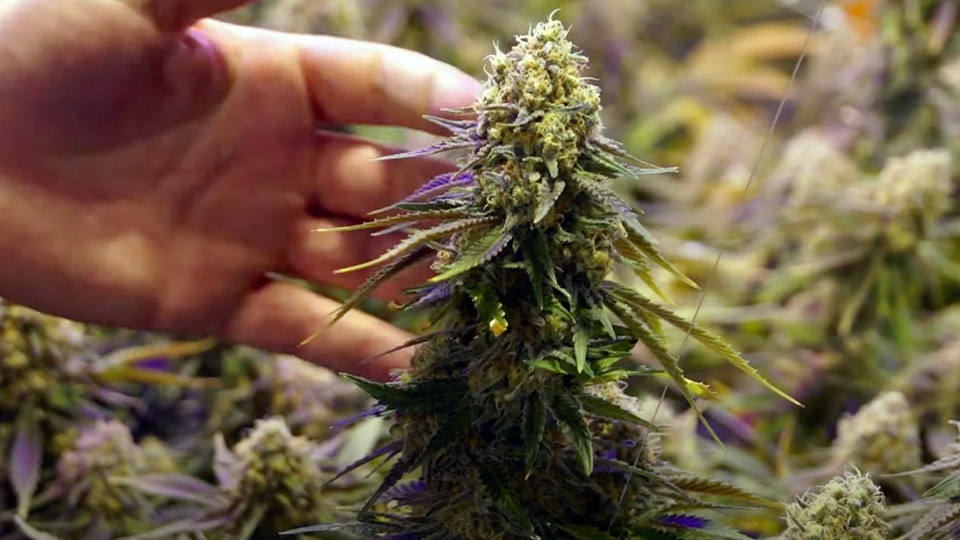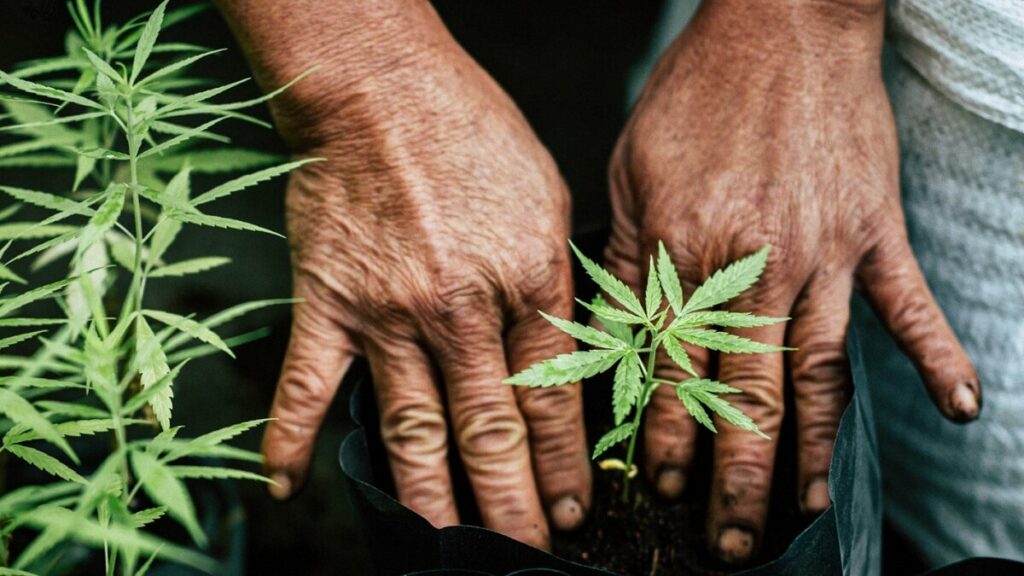Introduction
Growing cannabis can be both a rewarding hobby and a lucrative commercial venture, but achieving healthy and potent plants requires a solid understanding of the nutrients they need. Cannabis, like any other plant, requires a delicate balance of nutrients to thrive, develop robust roots, sturdy stems, lush foliage, and fruitful buds. This comprehensive guide covers the essential nutrients required for cannabis growth and how to manage them effectively, ensuring your plants reach their full potential.
To optimize cannabis growth, growers must not only focus on the primary macronutrients—nitrogen, phosphorus, and potassium—but also ensure adequate supplies of secondary nutrients like calcium, magnesium, and sulfur, which support vital plant functions and structural integrity. Additionally, trace elements such as iron, manganese, zinc, copper, and molybdenum, though needed in smaller quantities, are crucial for preventing nutrient deficiencies that can impair plant health and reduce yield. Understanding the specific growth stages of cannabis, from vegetative growth to flowering, is vital as each stage has different nutritional requirements. Implementing a feeding schedule that adjusts nutrient ratios according to these stages can dramatically impact the quality and quantity of the final harvest. Furthermore, growers must monitor soil pH and conductivity regularly to maintain optimal nutrient absorption and prevent toxicities or deficiencies that can arise from pH imbalances. By mastering these aspects of nutrient management, cultivators can ensure their cannabis plants are healthy, vibrant, and productive.
Understanding the Basics: Macronutrients and Micronutrients

Cannabis plants require a mix of both macronutrients and micronutrients, each serving critical roles in plant development and health.
1. Macronutrients
Macronutrients are required in larger quantities and form the foundation of healthy cannabis growth:
- Nitrogen (N) – Vital for the growth of leaves and stems, nitrogen is a key component of chlorophyll, the green pigment responsible for photosynthesis. It also plays a role in protein synthesis, affecting the overall growth rate of the plant.
- Phosphorus (P) – Essential for energy transfer and photosynthesis, phosphorus is crucial during the flowering phase of cannabis. It helps in root development and the production of potent buds.
- Potassium (K) – Important for overall plant health, potassium aids in photosynthesis, nutrient absorption, and water uptake. It helps strengthen the plant’s abilities to resist diseases and plays a role in the synthesis of proteins and starches.
2. Micronutrients
Although needed in smaller amounts, micronutrients are just as crucial for the balanced growth of cannabis:
- Calcium – Strengthens plant cell walls, aiding in the development of strong stems and leaves.
- Magnesium – A central component of chlorophyll, necessary for photosynthesis.
- Sulfur – Important for protein synthesis and the production of enzymes and vitamins.
- Iron – Required for the synthesis of chlorophyll and acts as a catalyst for chemical reactions.
- Boron – Aids in cell growth and helps in the efficient uptake of calcium.
- Copper – Involved in photosynthesis and the metabolism of carbohydrates and proteins.
- Manganese – Helps in the breakdown of enzymes and chlorophyll production.
- Zinc – Plays a crucial role in growth hormones and enzyme systems.
- Molybdenum – Facilitates the conversion of nitrogen into amino acids.
The Importance of pH Levels
Understanding and managing soil pH is crucial in nutrient uptake. Cannabis plants typically prefer a slightly acidic environment with a pH of about 6.0 to 7.0. When pH levels fall outside this range, it can lead to nutrient lockout, where the plants cannot absorb nutrients efficiently, regardless of the nutrient levels present in the soil. Regularly testing your soil’s pH and adjusting it using lime (to increase pH) or sulfur (to decrease pH) can help maintain optimal nutrient absorption.
Maintaining the right pH is not only critical for the absorption of macronutrients but also for micronutrients, which are equally vital for plant health and productivity. For example, elements like iron, manganese, and zinc become less available in more alkaline conditions, potentially leading to deficiencies that can stunt growth and affect the overall health of the plant. On the other hand, overly acidic soils can lead to toxic levels of certain micronutrients, such as aluminum and manganese, which can be harmful to cannabis plants.
Implementing a regular schedule for testing soil pH can preemptively address these issues. Growers can use simple pH testing kits available in garden stores or invest in more sophisticated digital pH meters for more accurate readings. Adjustments to the soil pH should be made gradually and re-tested to ensure that the desired pH level is achieved without overshooting the target range. By proactively managing soil pH, cannabis growers can create an environment that maximizes nutrient availability, enhances root health, and promotes vigorous plant growth, ultimately leading to a more successful and fruitful cultivation.
Also Read: Preserving Potency: A Guide to Storing Cannabis Seeds in Canada
Nutrient Ratios and Growth Stages
The nutrient requirements of cannabis plants change significantly between the vegetative and flowering stages, reflecting the plant’s shifting focus from foliage growth to flower production:
During the vegetative stage, cannabis plants prioritize vegetative growth, developing lush foliage and sturdy stems to support future flower production. To support this rapid growth, plants require higher levels of nitrogen, the primary component of chlorophyll and amino acids, which are essential for photosynthesis and protein synthesis. Additionally, cannabis plants benefit from medium levels of phosphorus, crucial for energy transfer and root development, and high levels of potassium, which aids in water regulation, enzyme activation, and overall plant vigor.
As cannabis plants transition to the flowering stage, their nutrient requirements undergo a significant shift to support bud formation and maturation. During this phase, cannabis plants require lower levels of nitrogen to discourage excessive vegetative growth and promote flower development. Instead, plants require higher levels of phosphorus, which plays a critical role in energy transfer and flower development, and medium to high levels of potassium, which helps enhance flower size, density, and resin production. Adjusting nutrient levels according to the plant’s growth stage is essential for promoting healthier growth, maximizing bud development, and ultimately achieving optimal yields.
Fertilizers and Supplements
Selecting the right fertilizers is critical for providing cannabis plants with the necessary nutrients. Organic options such as bat guano, bone meal, and fish emulsion are popular choices among growers seeking to cultivate their plants using natural and sustainable methods. These organic fertilizers not only provide a balanced mix of essential nutrients but also contribute to the overall health of the soil by promoting microbial activity and improving soil structure.
Furthermore, commercially available cannabis-specific fertilizers have gained popularity for their convenience and effectiveness. These fertilizers often come in “Grow” and “Bloom” formulas tailored to the specific nutrient needs of cannabis plants during different growth stages. The “Grow” formula typically contains higher nitrogen levels to support vegetative growth, while the “Bloom” formula contains higher phosphorus and potassium levels to promote flower development and bud production.
For soil-based grows, slow-release granular fertilizers are a popular choice as they provide a steady supply of nutrients over an extended period. These fertilizers gradually break down in the soil, releasing nutrients as the plants need them, which reduces the risk of over-fertilization and nutrient runoff.
In hydroponic systems, water-soluble fertilizers offer precise control over nutrient delivery, allowing growers to tailor nutrient concentrations to the specific needs of their plants. However, this method requires careful monitoring to avoid over-fertilization, which can lead to nutrient imbalances and plant stress. Growers must regularly test the nutrient solution’s pH and electrical conductivity (EC) levels to ensure optimal nutrient uptake and plant health. Overall, selecting the right fertilizer and nutrient delivery method is crucial for supporting healthy growth and maximizing yields in cannabis cultivation, regardless of the growing medium used.
Common Nutrient Deficiencies and Their Signs
Being able to identify signs of nutrient deficiencies can save your crop from severe issues:
- Nitrogen deficiency is marked by yellowing and wilting of lower leaves.
- Phosphorus deficiency shows up as dark green or purple leaves and stunted growth.
- Potassium deficiency is indicated by yellowing leaf edges and scorched tips.
Conclusion
Growing cannabis successfully involves more than just planting seeds and watering them. Understanding the complex nutritional needs of your cannabis plants can lead to robust growth and abundant yields. By mastering the balance and timing of nutrient application, monitoring soil pH, and recognizing the signs of nutrient deficiencies, you can optimize your cannabis cultivation and enjoy the fruits of your labor.

